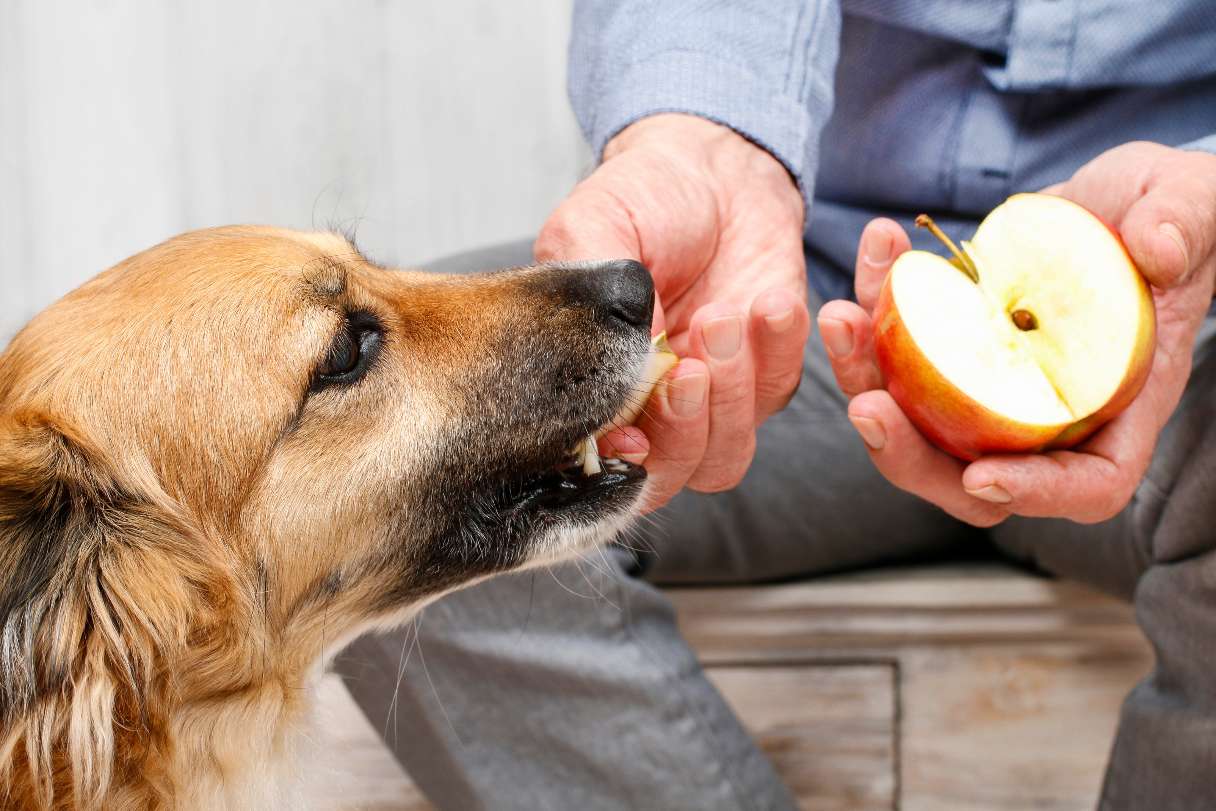Tomatoes may be a common staple for most salads and many sauces today, but there was a time when this fruit (yes, fruit!) was feared due to its relation to the toxic nightshade family.1 Thankfully, that fear has passed, and we now regularly enjoy the tasty benefits of tomatoes. Even better, the red varieties are also fine for your furry family member to enjoy in small amounts. Here’s everything you need to know about sharing this bright and juicy fruit with your dog.
Are Tomatoes Good for Dogs?
Yes, red tomatoes can be a healthy treat for your dog — just be sure they don't ingest green tomatoes or the leaves or stem of any tomato plant. It's also wise to steer clear of tomato soups and sauces, which are often loaded with additives.
Health benefits
Tomatoes are full of healthy nutrients and antioxidants. They contain lycopene, which gives them their signature red color. Lycopene is also a potent antioxidant that helps with bone health and boosts the immune system.
Tomato skin contains naringenin, another super antioxidant with a wide range of benefits. The fruit is also a good source of vitamin C (an immunity booster) and vitamin K (which supports blood clotting and bone and heart health).
Dental benefits
Tomatoes are very acidic, and this can contribute to tooth decay. Encourage your dog to drink water after eating a tomato to help rinse and clean their teeth.
How Many Tomatoes Can Dogs Eat?
A general rule is that healthy treats should make up no more than 10% of your dog’s daily calories. The number of calories in tomatoes ranges from 3 calories in a cherry tomato to around 20 calories in a medium tomato and more than 30 calories in a large tomato. If you have a small dog, they can have a couple of pieces, while a large dog can have up to a few slices.
What Happens if a Dog Eats Too Many Tomatoes?
If your dog really likes tomatoes and eats too many, they may get an upset stomach. Because of the acidity of the fruit, your dog may also experience gastrointestinal discomfort or even vomiting. Contact your veterinarian for advice if you have any concerns.
Are Dogs Allergic to Tomatoes?
Dogs are not usually allergic to tomatoes, but as with any new food, it's wise to give them just a small amount the first time so you can monitor for any reaction. If you see signs of skin irritation or digestive problems, discontinue giving your dog tomatoes and contact your veterinarian for advice.
How to Prepare Tomatoes for Dogs
First and foremost, only give your dog ripe, red tomatoes. Green, unripe or premature tomatoes can be toxic to your dog. The skin and seeds are safe to eat as long as you wash the tomato carefully. Be sure to remove the green stem and core and cut the fruit into small pieces.
Here are some other ways to prepare tomatoes for your dog:
- Puree or crush tomatoes, which further releases lycopene. Some dogs enjoy tomatoes prepared this way as a topper on their regular meal.
- Freeze pureed tomatoes in an ice cube tray for a fun and refreshing treat.
- Hollow out a tomato and fill it with your dog's favorite treat, their meal or other healthy fruits and veggies.
Avoid soups, sauces and ketchup as they contain additives that aren’t good for your pup.
Don't Feed a Dog Green Tomatoes or Tomato Leaves or Stems
Green or unripe tomatoes can be dangerous for your dog to eat because they contain the poisonous alkaloids solanine and tomatine. Signs of poisoning in your dog include weakness, tremors, cardiac effects or seizures. If your dog ingests any green tomatoes — or the leaves or stems of any tomato plant — call your veterinarian or emergency hospital right away.
CareCredit Credit Card Financing for Dogs
Taking good care of your pet's well-being from nose to tail is essential. Make sure to stay up to date on their regular checkups at the vet to help keep your pet happy and healthy for a lifetime of love. You can use your CareCredit credit card for pet care throughout the year for routine veterinary services as well as emergencies and surgeries.* Use our Acceptance Locator to find a veterinarian near you that accepts CareCredit.
CareCredit is there for you and your pet every step of the way. Continue your wellness journey by downloading the CareCredit Mobile App to manage your account, find a provider on the go and easily access the Well U blog for more great articles, podcasts and videos.
In addition to pet care, you can also use your CareCredit credit card for dentistry, cosmetic, vision, hearing, health systems, dermatology, pharmacy purchases, spa treatments and so much more within the CareCredit network. How will you invest in your health and wellness next?
Author Bio
Dr. Kathy Wiederkehr (Wentworth) has been practicing veterinary medicine at pet care facilities in California since 2001. Most recently, she served as medical director of the VCA PetPoint Medical Center and Resort in Irvine. She is a graduate of the University of Pennsylvania School of Veterinary Medicine and became board-certified as a diplomate in Canine and Feline Practice by the American Board of Veterinary Practitioners in 2010.







